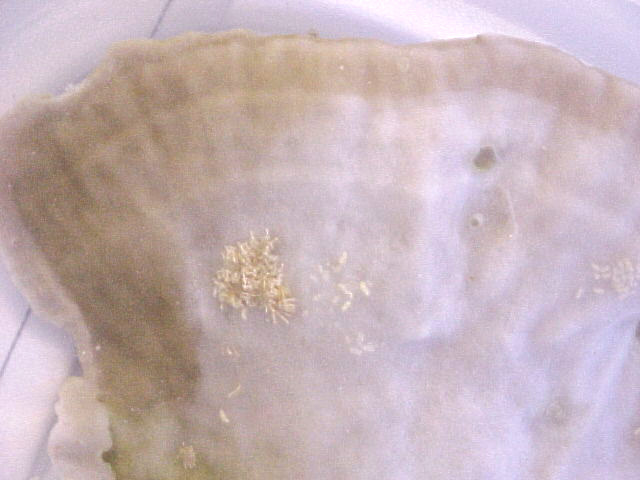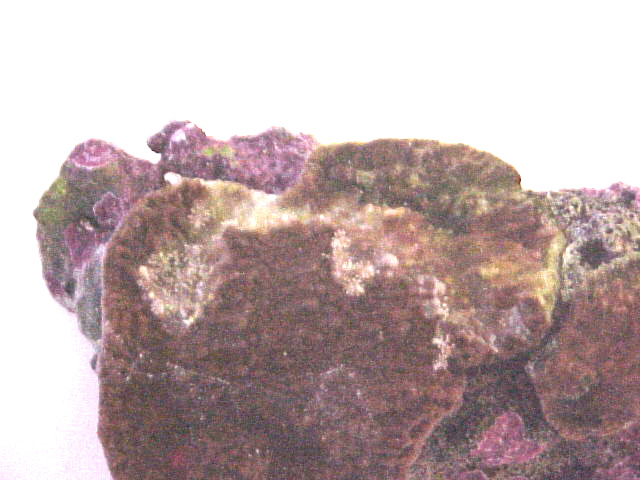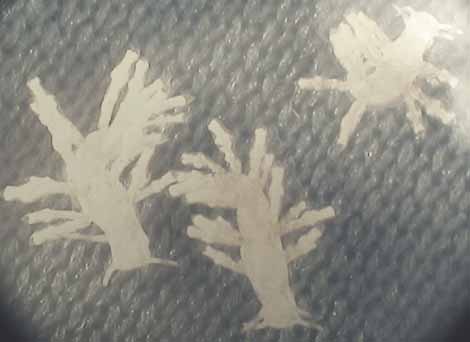
Recognition
My initial observation was that some edges of this coral appeared "unhappy". In this case,
unhappy means a faded color around the lower edges of the coral near the point of its
connection to the rock. The polyp extension in this area was also very reduced. The rest
of the coral looked fine. The less than ideal health of this coral led me to investigate
more fully. On closer inspection, the underside of the coral was showing some completely
white regions where the flesh was recently missing and no algae or diatoms had yet colonized.
This sometimes happens on the underside of corals so I was not yet too alarmed. However, as
I continued to inspect the coral, I found what appeared to be a patch of clear mucous with
white specs in it. It was about 1/2 the area of an American quarter. I recognized this as an
egg mass. Very shortly, I found the mother of the egg mass. It was mostly white and only about
1/2 inch long and it appeared "frilly". I removed the coral from my tank and placed it in a
bowl of tank water to get a really good look. The frilly slug like creature turned out to be
a three small nudibranchs in close proximity.
Identification
This nudi may grow larger than 3/8 inch but I haven't seen one any larger. Of course, it
wasn't my intent to culture these guys. It is white with grayish spots on it. It has a series
of protrusions emanating from its body that gives it the frilly appearance. At first glance,
it almost looks like a white colored foram. I observed this creature only on the bottom side
of the coral, even when observing with the lights outs and viewing with a flashlight. It
tended to stay near crevices in the rock or coral, apparently always staying under the
protective cover of its victim. It may be light sensitive, but in my limited experience it
is not greatly light sensitive. It did not run and hide from my flashlight. The photographic
images included within this article will give a good idea of the animal's appearance and also
a close-up of the egg masses which first tipped me off.

Description
The order Nuidibranch is found within the class gastropod within the Mollusc phylum. There are
four sub classes of gastropods and eight orders within the opisthobranch subclass, to which
the nudibranchs belong. Further, there are four sub orders within the order of nudibranchs.
The sub orders are further divided into families with each family containing multiple genre.
Finally, each genre will contain multiple species. There would appear to be many nudibranchs
as yet undescribed with more species being found all the time. The chart below tracks the
taxonomy of the nudibranchs down to the sub order level. The information was found on another
web site which contains quite a bit more detail on nudibranchs. It also contains a pretty good
list of references for those interested in more extensive research on nudibranchs. My thanks
to the authors of this site. Its web address www.diveoz.com.au
Two other sites worth visiting are
http://www.rzuser.uni-heidelberg.de/~bu6/index.html and
http://www.oz.net/~miranda/
|
|
|||||
The taxonomy may not mean a lot to most hobbyists, but we may often find insight into an animal's behavior by understanding its origins and relatives. For instances, all Aeolidoidea are carnivores. Many have very specific diets and this may help explain why nudibranchs have traditionally been difficult to keep in captivity. The nudibranch in my system most definitely displayed the above characteristics. Mine seemed to like Monitpora species corals and probably would not have spread to my other SPS corals.
While nuibranch literally means naked gill, the Aeolidoidae have no gills at all. Instead, they breath through there "skin". The elongate extensions from its body called cerata aid in respiration by increasing surface area. Digestive mechanisms also reside within the cerata. Here, a picture will be worth a thousand words. Photograph "B" shows the major body parts of the Nudibranchs within the Aeolidoidae.
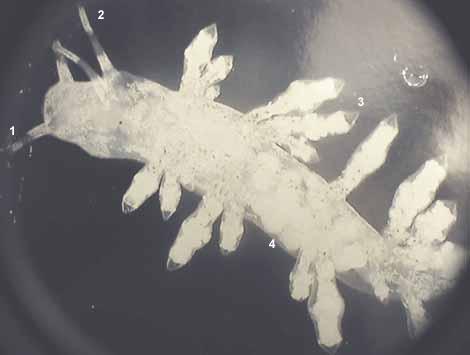
One other interesting thing about this particular group of nudibranchs is their ability to consume the nematocyts from the victimized coral and incorporate the unfired stinging cell into their cerata. Thus we have a biological example of military espionage, the theft of another's defense secrets.
Elimination/Abatement
I used a syringe to rinse the "nudis" off the coral. I used tank water, not fresh
water to rinse the coral so a not to further stress the coral. The egg mass was
too well attached for this procedure to work, so I used a small headed tooth brush
to removed the egg mass. I repeatedly rinsed the coral in more tank water hoping
to remove any stray eggs I had dislodged and then put the coral back into my tank.
For about 1 week all was well. The coral was unstressed from the "treatment" and
healing up. However, after about two weeks I re-inspected the coral and found a
fresh batch of nudibranchs of the same variety. I also found a new egg mass. This
time I repeated the previous procedure, but also gave the coral and rock on which
it was growing a dip in the Kent Marine SPS dip. The hope was that the SPS dip
would kill any nudibranchs hiding within the rock. However, it did not work for
within two days I observed two more nudibranchs on the underside of the coral. This
result is not too surprising as the SPS dips are not designed to kill nidibranchs.
At least this time I found no new egg masses. My next try was to treat the coral
and rock in Tetra Oomed. I knew this treatment would kill flat worms (which it did)
and hoped that it would also kill the nudibranchs. In order to verify how well the
treatment was working, I saved the treated nudibranchs for observation. Initially,
they turned a slight blue color, but showed no apparent ill effects from the Oomed.
However, the next morning when I observed them under a microscope, they were showing
obvious signs of extreme stress. They were alive, but looking much more like a ball
of slime than a viable nudibranch. By that after noon, they were dead. The previous
nudibranchs I had kept for observation had been kept in water from my reef system in
the same manner, but had shown very much less stress than the Oomed treated nudibranchs.
I believe the treatment did indeed kill the nudibranchs.
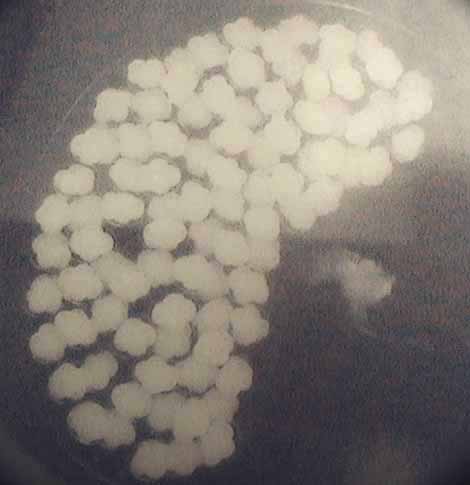
For the treatment, I used slightly more than the instructions on the bottle call for in a fish only system. However, I left the coral in the treated water for only about 5 minutes. (The treatment was obviously carried out in a separate container, and NOT in my tank. Further, I do not recommend adding the Oomed into the water of any reef system. The fact that this chemical, which is designed for use on parasites also kills nudibranchs and flat worms should be ample warning.) I saw no signs of stress in the coral beyond what is usual for a coral when it is moved from place to place. This treatment may have killed the nudibranchs sooner if a longer exposure time had been used. I expect the Oomed may work to kill most aeolids as they have similar biology and respire through their "skin". I can't say if the treatment would work on nudibranchs from different sub orders.
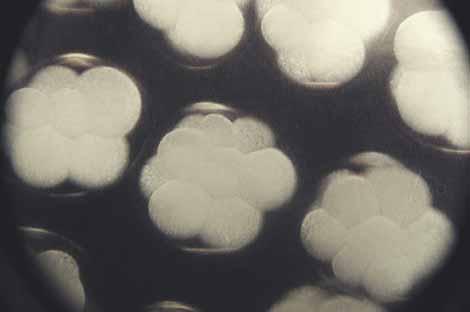
Hopefully, this short article will help others in their fight against pests and perhaps
give people the desire to do a little experimentation of their own. If you have any
particular comments or questions on this brief article, I can be reached via e-mail at
Mutagen@ix.netcom.com Good reefing!
